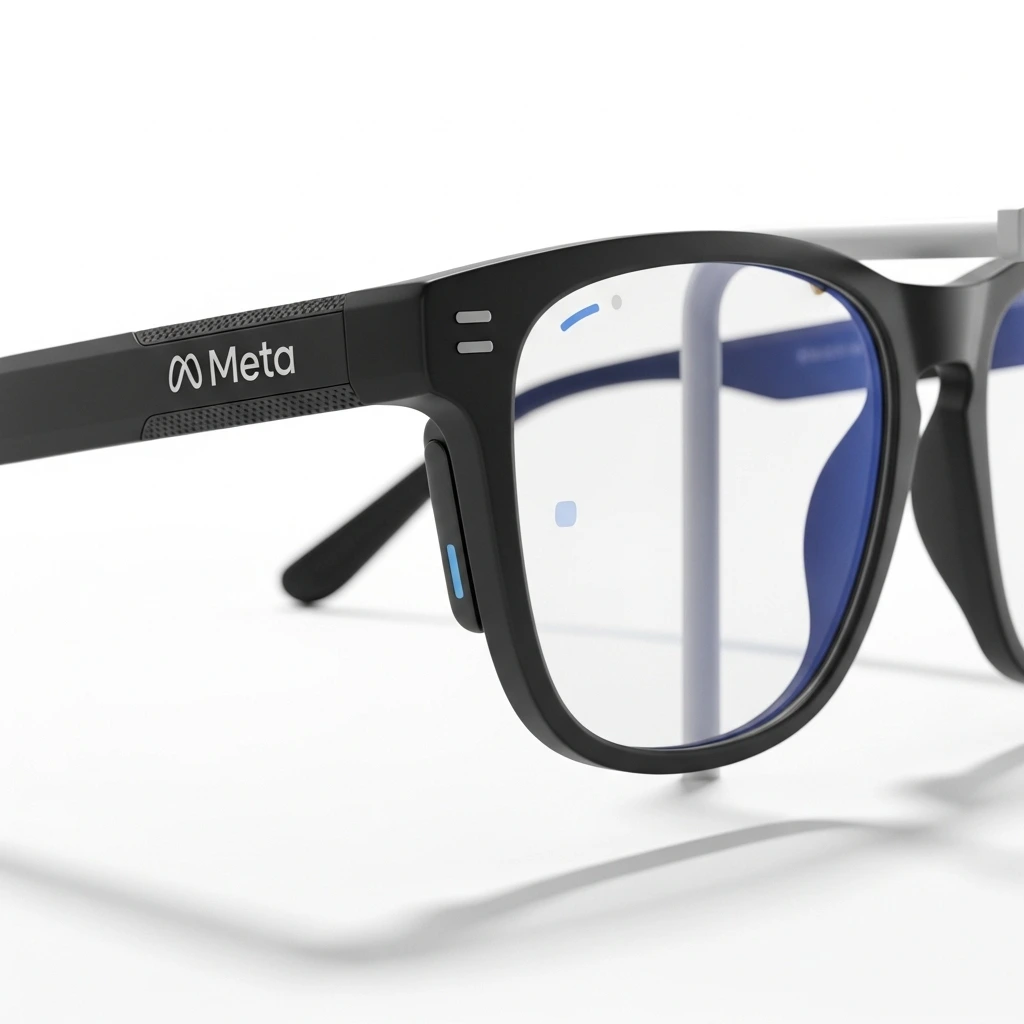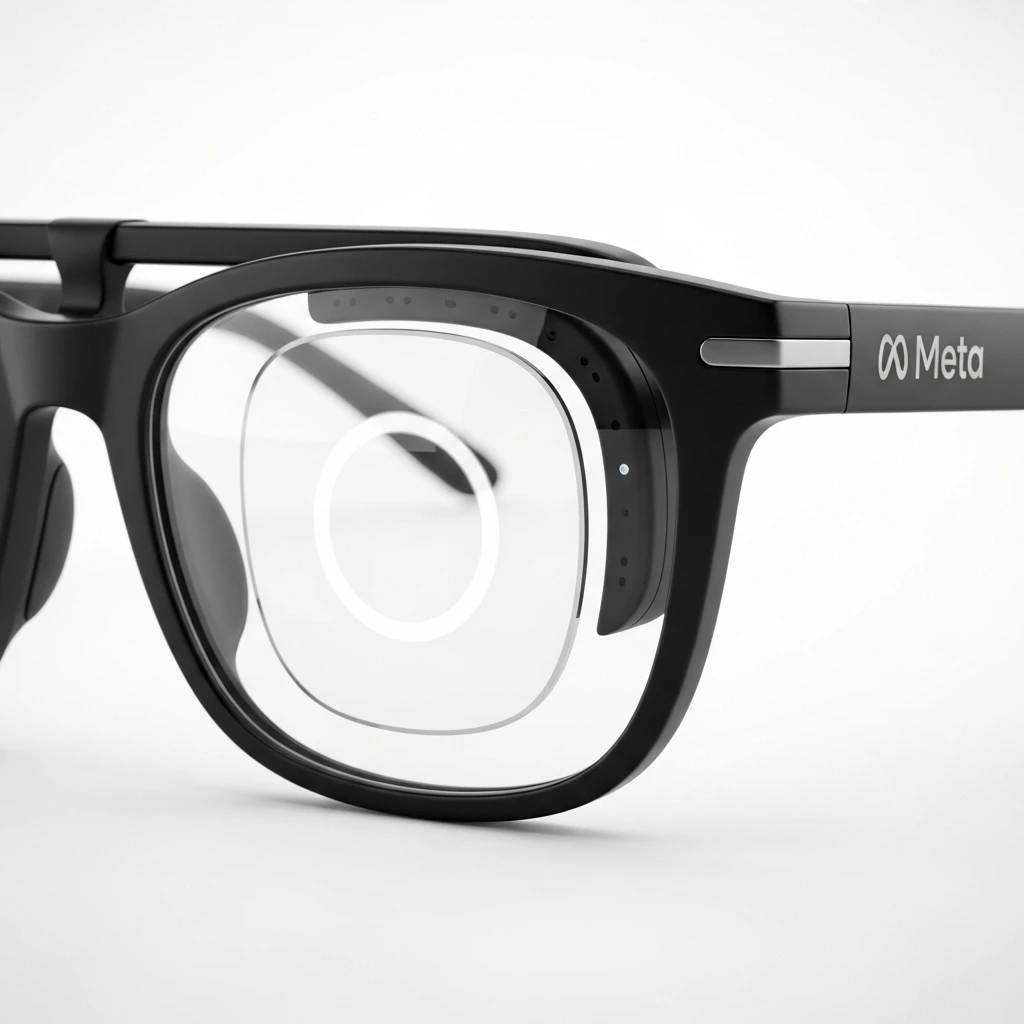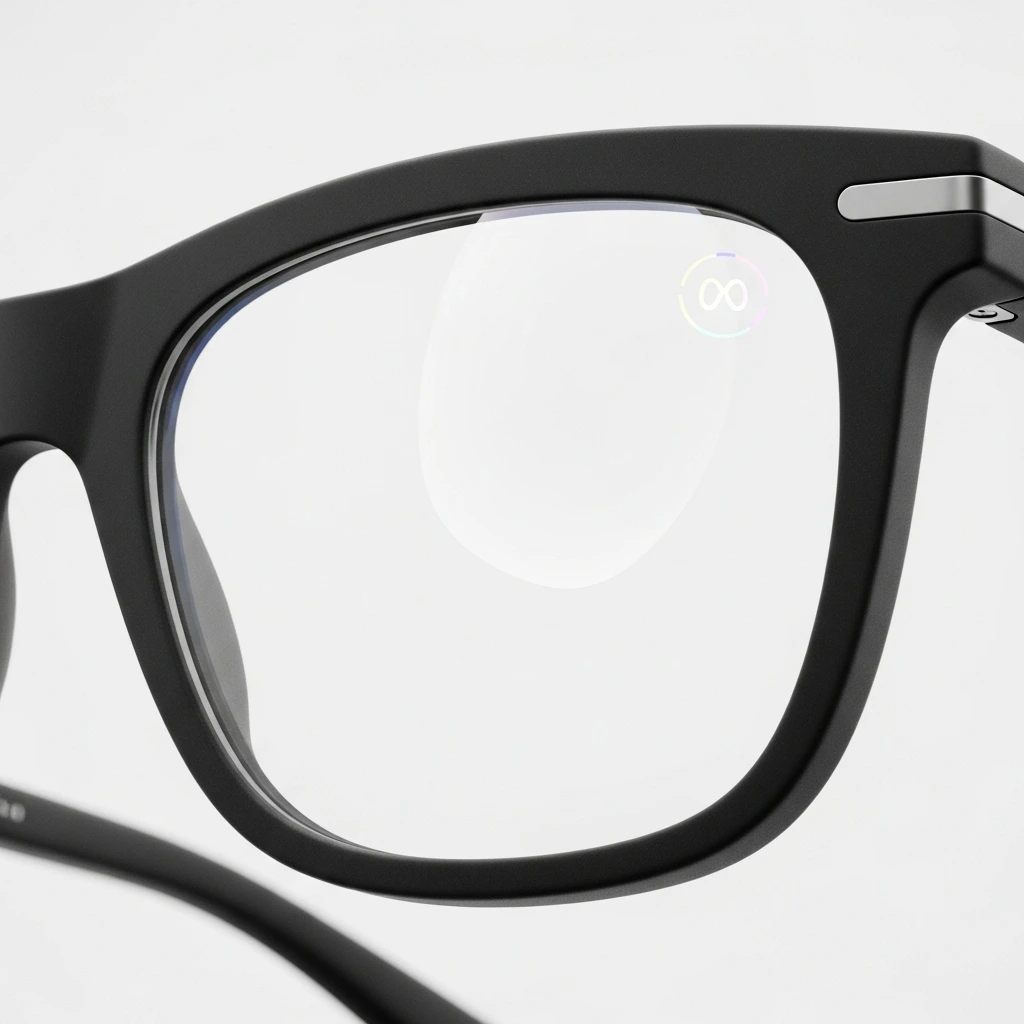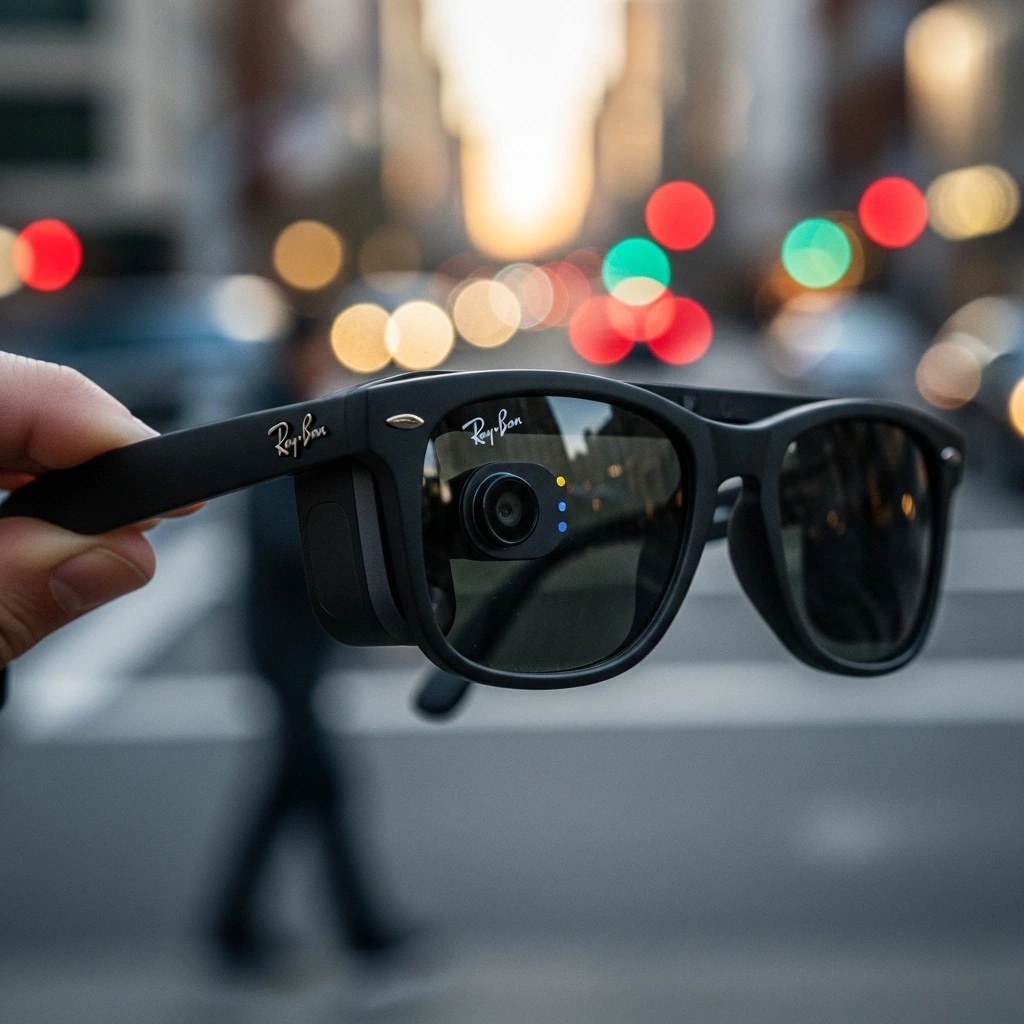5 Amazing Reasons Meta Glasses Will Change Your Life
Alright, let’s have a real chat. Forget the polished, corporate-speak nonsense you’ve read elsewhere. You and I, we’re enthusiasts. We’ve seen tech fads come and go, right? I was there when the first iPhone dropped, and I remember the collective shrug at Google Glass. So when the new Ray-Ban Meta Glasses landed, my inner skeptic, honed by two decades in this game, was on high alert.

But then I actually used them. And let me tell you, this isn’t just another gadget. This is one of those rare shifts, a quiet revolution that starts on your face and slowly rewires how you interact with the world. I’m not being dramatic. Well, maybe a little. But seriously, these things are legit. They aren’t just a camera on a pair of shades; they’re a seamless extension of your intentions.
So, grab a coffee, get comfortable, and let me walk you through the five big, no-fluff reasons why I genuinely believe these Meta glasses are about to become your new favorite piece of tech. This isn’t a sales pitch; it’s a field report from someone who’s seen it all and was still, somehow, completely blown away.
Reason 1: The Ultimate Content Creation Machine (On Your Face!)
Look, we all create content now. Whether you’re a professional influencer, a small business owner showing off your products, or just someone trying to get a decent video of your kid’s soccer game without dropping your phone, you’re a creator. The biggest hurdle? Your hands.
Hands-Free POV Like Never Before
Ever tried to film yourself cooking a recipe? It’s a comedy of errors. You’re either propping your phone against a bag of flour, getting greasy fingerprints all over the screen, or recruiting an unwilling family member to be your cameraman. It’s a mess. The Meta Glasses completely obliterate this problem.
With a simple tap or a voice command (“Hey Meta, start recording”), you’re capturing pristine, first-person point-of-view (POV) video. The world sees exactly what you see. The new 12MP ultra-wide camera is a massive upgrade from the first generation, delivering sharp, vibrant 1080p video that’s more than good enough for Instagram Reels, TikToks, or YouTube Shorts.
I took them on a hike last weekend. Instead of constantly pulling out my phone and breaking the rhythm of the walk, I just captured moments as they happened. The birds, the trail, the view from the summit—all recorded effortlessly. It’s a fundamentally different way to capture memories. You’re not observing the moment through a screen; you are in the moment, and the glasses are just along for the ride. It’s the kind of stabilized, hands-free shooting that dedicated gadgets like the DJI Osmo Pocket 4 aim for, but built into something you’re already wearing. The convenience is just off the charts.
Livestreaming Straight from Your Eyeballs
This is where it gets really wild for creators. You can livestream directly to Facebook and Instagram from the glasses. Think about the possibilities. A mechanic can stream a tutorial while working on an engine. An artist can give a live painting class, showing every brushstroke from their exact perspective. A traveler can share a walk through a bustling market in real time, completely unencumbered.
The quality is solid, and the connection to your phone is surprisingly stable. You’re delivering an experience that feels incredibly authentic and immediate. No more shaky-cam apologies or fumbling with tripods. It’s raw, it’s real, and it’s happening from your point of view. For anyone building a personal brand or community online, this feature alone is a total game-changer. I’ve seen people use it for everything from live Q&As while on a walk to giving a virtual tour of their home office. The potential here is huge, especially as we wait for more news on the DJI Pocket 4 release date rumors and see how the competition stacks up.
Reason 2: Your Personal AI Assistant, Whispering Sweet Nothings (of Productivity)
If the camera is the flashy feature, the AI is the silent workhorse that will fundamentally change your daily habits. It sounds like something out of a sci-fi movie, but having an AI assistant in your ear is… well, it’s awesome.
Meta AI: More Than Just a Voice Command
We’re all used to yelling “Hey Siri” or “Okay Google” at our devices. But the integration of Meta AI in the glasses feels different. It’s more contextual, more immediate. Because the glasses can see what you’re seeing (if you choose to let them), the interactions become much more powerful.
Walking through a city and see a cool monument? “Hey Meta, what’s that building in front of me?” In a foreign country and staring at a menu you can’t read? “Hey Meta, translate this for me.” The AI will identify what you’re looking at and whisper the answer directly into your ear. It’s like having a real-life version of Google Lens, but without the awkwardness of holding your phone up to everything.
Here’s a real-world example: I was at a nursery trying to identify a plant. Instead of pulling out my phone, unlocking it, opening an app, and taking a picture, I just asked the glasses. Two seconds later, I had my answer. It feels like a superpower. It’s this kind of seamless, real-world integration that makes the Ray-Ban Meta Glasses feel less like a gadget and more like an upgrade to your own brain.

The End of “Umm, Hold On, Let Me Google That”
You know that moment in a conversation when a trivia question comes up, and everyone immediately pulls out their phones, breaking the flow of the discussion? That moment is over.
With Meta AI, you can settle debates, get quick facts, or brainstorm ideas without ever breaking eye contact. “Hey Meta, who won the Oscar for Best Picture in 1998?” Bam. Answered. “Hey Meta, give me a good recipe idea for chicken and broccoli.” Done.
It keeps you present and engaged in your social interactions while still giving you access to the world’s information. Honestly, it’s a bit of a party trick. But beyond that, it’s a tool for curiosity. You’re more likely to ask questions and learn new things when the barrier to getting an answer is practically zero. You can win every trivial argument instantly, and who doesn’t want that power?
Reason 3: Seamless Audio That Doesn’t Isolate You
I am a huge podcast and music junkie. But I also hate being that person who’s completely oblivious to the world around them because they have noise-canceling earbuds crammed in their ears. It’s anti-social and, frankly, a bit unsafe when you’re walking around a city.
Open-Ear Audio: The Best of Both Worlds
The Meta Glasses solve this with a brilliant open-ear audio system. It’s not bone conduction; instead, custom-designed speakers discreetly built into the arms of the glasses direct sound right at your ears. The result? You get rich, clear audio for your music or podcasts, but you can still hear everything happening around you perfectly.
I can listen to my favorite tech podcast while walking my dog and still hear a bicycle coming up behind me. I can take a call while waiting for my coffee and still hear the barista call my name. The audio is surprisingly private, too. Unless you have it cranked to max volume in a dead-silent room, no one around you can hear what you’re listening to.
It’s a more natural, safer, and more socially aware way to consume audio on the go. For anyone who has felt isolated by traditional headphones, this is a breath of fresh air. It’s one of those “you have to try it to get it” features, and IMO, it’s one of the most underrated aspects of the glasses. For a great all-around package, you can check out the latest styles on Amazon.
Crystal-Clear Calls Without Looking Like a Secret Agent
Let’s be honest, most Bluetooth earpieces make you look ridiculous. You’re either rocking the “call center chic” or the “I’m a bodyguard” vibe. The Meta Glasses have a five-microphone array that captures your voice with incredible clarity, and no one is the wiser.
I’ve taken dozens of calls on these, in busy streets, windy parks, and noisy cafes. Almost every single person on the other end has commented on how clear I sound. They had no idea I was talking to them through a pair of sunglasses.
The microphones work together to isolate your voice from background noise, making for professional-quality calls no matter where you are. This is a huge win for professionals who are always on the move or anyone who just wants to chat with family without holding a phone to their ear. You look like you’re wearing stylish Ray-Bans, not commanding a starship from the bridge.

Reason 4: A Genuinely Stylish Piece of Wearable Tech
This might be the most important point of all. Because if wearable tech looks stupid, no one will wear it. Period. The graveyard of ugly gadgets is vast and deep.
It’s Ray-Ban, Not RoboCop
The single biggest reason the Meta Glasses succeed where others (ahem, Google Glass) failed is because they look like a normal, stylish pair of glasses. This isn’t a tech company trying to make fashion; this is a legendary fashion company (Ray-Ban) integrating tech seamlessly.
They come in the iconic Wayfarer and the new Headliner styles, which are timeless and look good on almost everyone. From a few feet away, you can’t even tell they’re smart glasses. The cameras are tiny, the arms are only slightly thicker than normal, and the overall aesthetic is pure Ray-Ban.
This matters. It means you can wear them to a business meeting, a casual brunch, or a family barbecue without feeling self-conscious or looking like a tech-obsessed weirdo. They blend in. They are fashion first, tech second, which is the golden rule for any successful wearable. There are a ton of frame and lens combinations available, like these transitional lens options that adapt to different lighting.
All-Day Comfort and Battery Life
Another nail in the coffin for past smart glasses was comfort. They were often heavy, unbalanced, and had terrible battery life. The Ray-Ban Meta Glasses are surprisingly lightweight and comfortable enough to wear all day.
The battery in the glasses themselves will get you about 4-6 hours of mixed use (listening to music, taking some photos/videos, etc.). But here’s the clever part: the carrying case is also a portable charger. Just pop the glasses back in the case, and they start charging. The case holds about eight additional full charges, giving you over 36 hours of total use before you need to find a USB-C cable.
This system works perfectly. You wear the glasses when you’re out and about, and when you sit down for a bit, you instinctively put them back in their case, where they top up. It’s a brilliant design that effectively eliminates battery anxiety.
Reason 5: The Gateway to the Future (Without Being Creepy… Mostly)
Okay, let’s talk about the big picture. These glasses are more than just their current feature set. They are a stepping stone.
A Taste of Augmented Reality (AR)
Right now, the “augmentation” is primarily audio-based (from the AI) and capture-based (from the camera). You aren’t seeing holograms projected onto the world… yet. But this is the crucial first step. By getting millions of people comfortable with wearing smart, connected glasses, Meta is paving the way for true AR.
Future software updates will almost certainly unlock more capabilities. Imagine navigation arrows appearing in your vision, or a friend’s name hovering next to them at a party. The Meta Glasses are building the hardware foundation and, more importantly, the social acceptance for that future. Buying them now feels like getting in on the ground floor of what will inevitably be the next major computing platform.
The Privacy Question: Let’s Address the Elephant in the Room
I can’t write this article without talking about privacy. The idea of a face-mounted camera is understandably concerning for a lot of people. So, did Meta do enough to address this?
I think they did a pretty good job. There is a very bright, externally-facing LED light that turns on anytime the camera is recording photo or video. It’s impossible to miss, and it can’t be disabled via software. If you see that light, you know you’re being recorded. It’s a clear, universal signal.
Is it a perfect system? No. But it’s a far cry from a hidden spy camera. It requires the same social contract we already have with smartphones. We trust people not to record us without permission. The same etiquette applies here. FYI, being a responsible user is key. Don’t be that person who records strangers without their consent. It’s just creepy.
Conclusion: Are Meta Glasses Worth It? My Final Take
So, after all that, what’s the verdict? Are these glasses going to change your life overnight? Maybe not in a cataclysmic, “sell your car and move to the woods” kind of way. But they will absolutely change your daily routines, your creative process, and your relationship with technology in subtle but profound ways.
For me, they’ve succeeded. They’ve managed to:
- Revolutionize hands-free content creation.
- Provide a genuinely useful, on-the-go AI assistant.
- Offer a brilliant open-ear audio experience.
- Package it all in a stylish, comfortable design you actually want to wear.
- Give us a tangible, exciting glimpse into the future of computing.
They aren’t perfect, and they aren’t for everyone. If you’re deeply skeptical of Meta or connected devices in general, these won’t change your mind. But if you’re a creator, a tech enthusiast, a busy professional, or just someone who loves the idea of technology that gets out of your way and lets you live your life more fully, then yes. They are absolutely worth it.
They’ve found a permanent spot in my daily carry. And for a 20-year tech veteran who’s seen it all, that’s about the highest praise I can give. So, are you ready to see the world a little differently?

Frequently Asked Questions (FAQs) about Meta Glasses
1. What can you actually do with Meta Glasses?
You can do quite a lot! The core functions include taking high-quality photos and videos from your first-person perspective, livestreaming to Facebook and Instagram, listening to music and podcasts via open-ear speakers, making crystal-clear phone calls, and interacting with the Meta AI assistant to get information, translate languages, and control the device with your voice.
2. Can Meta Glasses record video without anyone knowing?
No. For privacy reasons, a bright white LED light on the front of the glasses automatically turns on whenever the camera is recording either photos or video. This light is very noticeable to anyone in front of you and cannot be turned off. It’s designed to make it clear when the device is capturing media.
3. Are Meta Glasses the same as VR headsets?
Not at all. VR (Virtual Reality) headsets like the Meta Quest are designed to completely immerse you in a digital world, blocking out your physical surroundings. Meta Glasses are a form of “smart glasses” designed for Augmented Reality (AR) applications. They look and function like regular glasses, allowing you to see the real world while adding a layer of smart functionality, like audio and AI, without obstructing your vision.
4. How much do the Ray-Ban Meta Glasses cost?
The price starts at $299 USD for the standard Wayfarer or Headliner models with standard lenses. The price can increase depending on the lens choices, such as polarized, Transitions®, or prescription lenses. You can view the various pricing options for different styles on sites like Amazon.
5. Do Meta Glasses work with prescription lenses?
Yes, absolutely. You can order the Ray-Ban Meta Glasses with authentic Ray-Ban prescription lenses. This is a major advantage, as it allows people who already wear glasses to enjoy all the smart features without having to wear contacts or fit them over their existing frames. The prescription lenses are fully integrated, so they look and feel just like a normal pair of prescription Ray-Bans.


